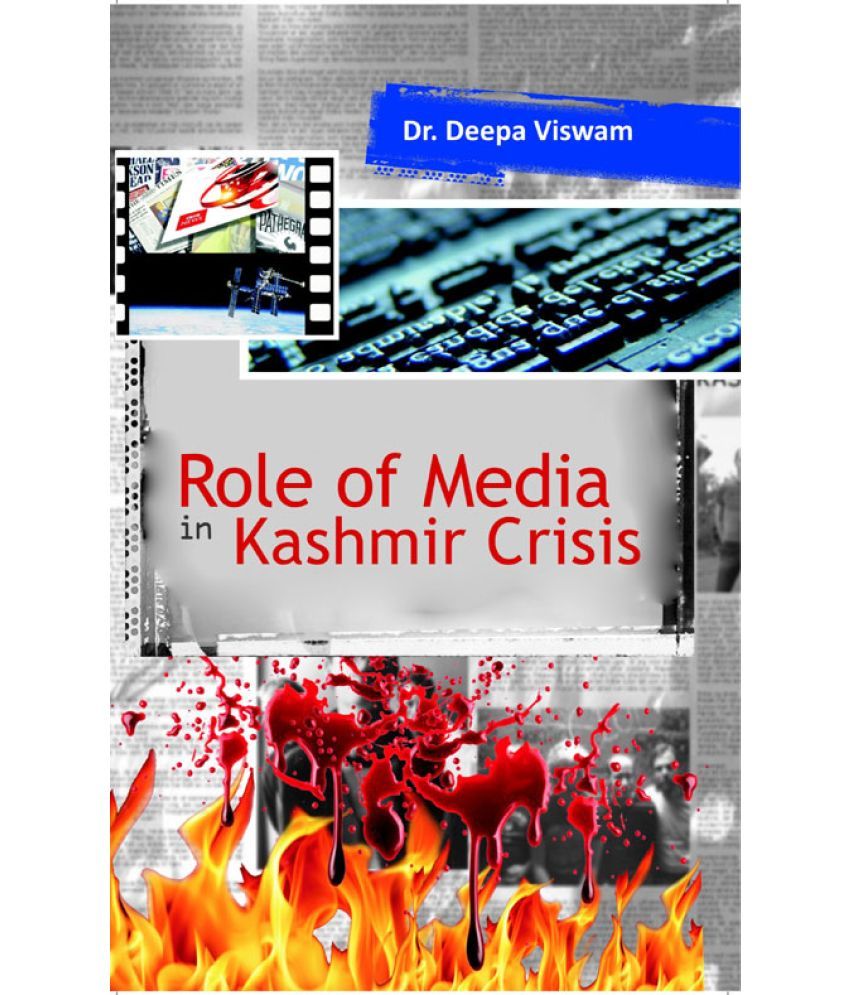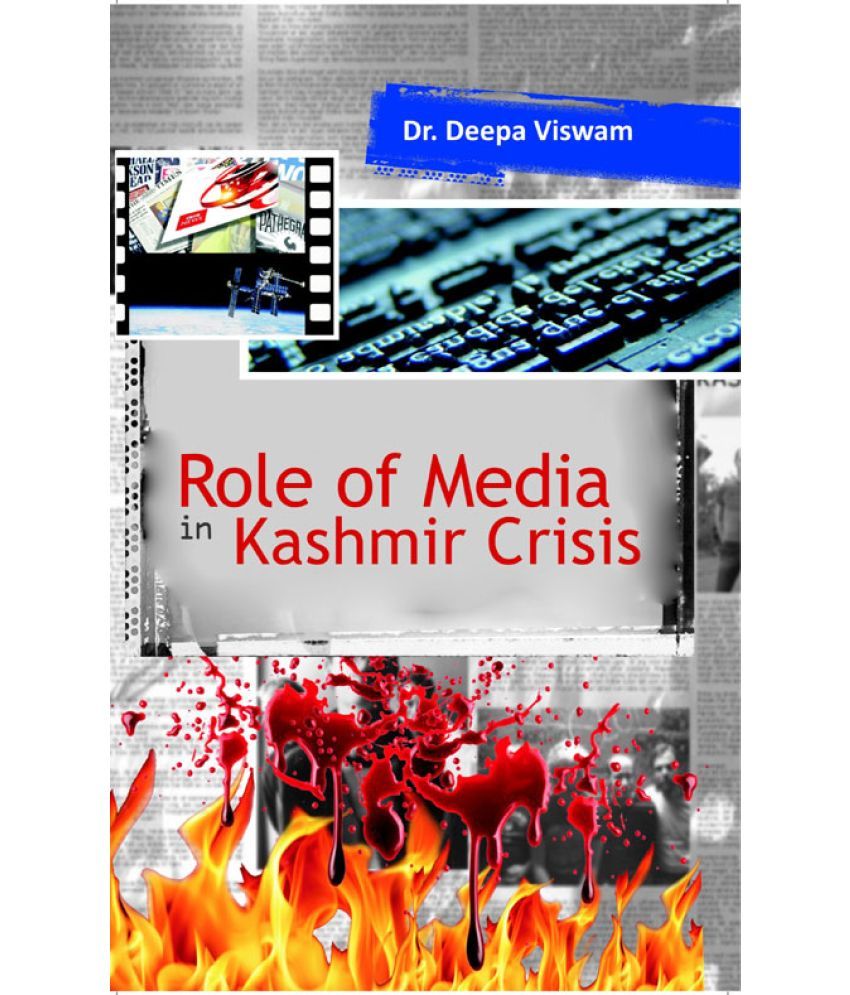The book examines exactly how far print media through its report coverage helps in resolving the Kashmir conflict. The composite dialogue initiated during the tenure of Vajpayee government has gained momentum in the Manmohan government. The issues discussed are: 1. Kashmir Issue 2. Sir Creek Mission 3. The Siachen Glacier. 4.Wullar Barrage. 5. Economic co-operation and friendly ties 6. Drug trafficking 7. Terrorism. The reports in both The New Indian Express and The Hindu are coded to find the rejuvenation of hope and formula especially during the tenure of Manmohan Singh government. The general news report, features, editorial, letter to editor, the photograph, the cartoon, the interview reflect on the issues are categorically coded to estimate the nature of peace process and the reconciliatory attitude of the print media in resolving the conflict. The qualitative and quantitative analysis is carried to make it more relevant as national issue instead of marginalizing as regional issue. How historical blunders like plebiscite and redrawing of boundaries are thwarted by the much fabricated design of the aggressors? The vehement protest by the media to protect the territorial sovereignty of India is laudable. The political initiative is much called in for ironing out the differences suggested by the media has received fillip in other nations. The violation of Indus treaty and the construction of dams for irrigation and consumption purposes has been discussed at length by media. The authentication of the actual ground position on the Siachen glacier 9842 NJ and the withdrawal of forces is highlighted by the media. The appointment of neutral expert in the construction of dams and where each government fails falls in the ambit of discussion. The gas pipeline project India-Iran-Pakistan for economic co-operation with the intervention US and the suzerainty expressed by US to derail the process is convincingly reiterated by media. The infiltration of terrorist and the extremist is widely reported with full blown photograph thus in magnifying the conflict. Every effort has been taken to make this book useful for students of conflict resolution scholars and general readers. About The Author:- Dr. Deepa Viswam, Working as lecturer in Communication and Journalism department for about 12 years at Mother Teresa Women's University, Kodaikanal Tamil Nadu. Published papers. Major areas of interest include international relations, conflict resolution and communication, peace research, Media and conflict studies. Presented papers at several international conferences and national seminars. Contents:- CONTENTS:- # Preface:. Introduction:. Review of Literature:. Methodology:. Brief History of Composite Dialogue:. General Reports: (a) Coverage of news stories between Indian government and: Pakistan government. There were stories in TNIE compared: to stories in The Hindu between Indian government and: Pakistan government. (b) Coverage of the PoK government and: India. There were five stories in The Hindu and absolutely no: stories in the TNIE on the future of PoK. (c) Coverage of the: mainstream parties and their urges. There was only one story in: The Hindu first and no stories in the TNIE. (d) Coverage Of: CBM Related. There were stories in The Hindu and stories: in The New Indian Express. (e) Coverage of human rights issue.: There were stories in The Hindu and thirty five stories in The: New Indian Express. (d) Coverage of new stores on different: political parties and their notion of peace During the period of: study these were serves stories in The New Indian Express and: nine in The Hindu. (e) Coverage of separatists among themselves.: The New Indian Express had four reports where else The Hindu: had six. (f) Coverage between centre and the state. During the: period of study there were twenty stories in The New Indian: Express and forty – five stories in The Hindu. (g) Separatists: leaders and centre During the period of study there were forty: Role of Media in Kashmir Crisis: four reports in The Hindu and Thirty - five in the New Indian: Express. (h) Coverage of waller barrage / tribal project and other: related stories. During the period of study there twenty two: reports in The Hindu and eleven reports in the New Indian Express: (i) Coverage of siachen issue. There were twelve reports in The: New Indian Express and twelve reports in The Hindu. (j) Coverage: of report on sir creek. There were reports on Sir Creek in The: New Indian Express and only two in The Hindu. (k) Coverage of: reports on third party mediation. The New Indian Express had: ten reports on third party mediation wherelse the Hindu: only: seven. (l) Coverage between separatist and pak government m.: Coverage of army. During the period of study there were eleven: started in the Hindu and reports in the New Indian Express. (n): Coverage of militancy related stories in the state. During the: period of study. There were forty three stories in The Hindu and: sixty three stories in the New Indian Express. (o) Development: in the state during the course of composite dialogue. During the: course of study there were five stories in The Hindu and two in: the New Indian Express. (p) Coverage of report justifying and: glorifying the past. There are five reports in TNIE where else: there were no reports in The Hindu. (q) Coverage of other stories.: During the period of study there were forty two stories in The: New Indian Express and seventy three stories in The Hindu.:. Editorials: (a) Editorials covering eco and cultural co-operation. (b) Editorial: covering cbms. (c) Editorials on the art of diplomacy. (d): Editorials suggesting terrorism. (e) Editorial with precautionary: note on the evolving peace. (f) Editorials covering cross-border: terrorism. (g) Editorials coverage of n - cbms. (h) Editorial on sir: creek. (i) Editorial on the composite dialogue. (j) Editorial on: third-party mediation. (k) Editorial on factors affecting delay: conflict resolution. (l) Editorials suggesting the views of the: political parties opposing peace process. (m) Editorials on: hurriyat. (n) Editorial of the previous govt. Vs. Upa govt. (o): Editorials covering separatists peace process. (p) Editorial for: progress of peace process. (q) Coverage of the role of the army.: (r) Editorial on pok (s) Editorials of human rights violation. (t): CONTENTS:- : Editorials on justifying the past. (u) Newspaper attitude (edstand): conflict management:. Features: (a) FEATURES COVERING CBMS. During the period of study: there were fourteen features in The Hindu where else there are: three features in The New Indian Express. (b) THE FEATURE IN: THE HINDU CITED IN THE TRADE. FEATURE PREDICTING: THE PEACE PROCESS N-CBM FEATURES COVERING THE: ECONOMIC CO-OPERATION: During the period of study there were two features in The New: Indian Express where else there only three features in the Hindu.: (c) COVERAGE OF FEATURES REDUCTION OF JIHAD AFTER: CD. During the period of study there was only one feature in: The Hindu and no such features in The New Indian Express. (d): COVERAGE OF THE DIALOGUE PROCESS AFTER THE. THIRD: ROUND OF COMPOSITE DIALOGUE. During the period of: study there were three features in The New Indian Express: wherelse there were only two features in The Hindu. (e) THE: FEATURE THE DEPRECATES THE INDIAN. AMERICAN: INTERESTS OVER KASHMIR (F). During the period of study: there were two features: in the New Indian Express and no such: features in the Hindu. (f) NEWSPAPERS ATTITUDE TOWARDS: PEACE PROCESS AND CONFLICT RESOLUTION. During the: period of study there were several features in the Hindu and: three features in The New Indian Express. (g) FEATURES: COVERING TERRORIST GROWTH ACTIVITIES AND: RELATED DEVELOPMENTS. During the period of study twelve: features in The Hindu and four features in The New Indian: Express. (h) THE FEATURE IN THE NEW INDIAN EXPRESS: ON NATURE TERRORIST FORCES DIPLOMACY FAILS.: During the period of study The New Indian Express had one: feature where diplomacy failed but The Hindu had no such: featured entirely to be discussed in diplomacy. (i) FEATURE: COVERING PEACE PROCESS AND THE RELATED: DEVELOPMENTS. During the period of study there were five: features in The New Indian Express on peace process and related: developments compared to six features in the Hindu. (j): Role of Media in Kashmir Crisis: NEWSPAPERS ATTITUDE ON CONFLICT RESOLUTION. There: were three features in The Hindu and two features in The New: Indian Express which dealt more on conflict resolution. (k): NEWSPAPERS ATTITUDE TOWARDS BILATERAL PEACE.: There were four features towards Newspapers attitude toward: bilaterial peace compared to the Hindu which carried only one.: (l) FEATURE COVERAGE OF SIACHEN ISSUE. During the period: of study there features in The Hindu and two such features in: the New Indian Express. (m) FEATURES COVERING ENDING: OF VIOLENCE AND PROMOTION OF PEACE. There were seven: features in The New Indian Express wherelse The Hindu carried: only two features. (n) FEATURES ON THIRD - PARTY: MEDIATION. There were two features related to third party: mediation in The Hindu wherelse four features in The New Indian: Express during the period of study. (o) FEATURES OF PoK.: During the period of study there was one feature in The Hindu: and one feature in the New Indian Express. (p) FEATURES: RELATED TO HUMAN RIGHTS VIOLATION. During the period: of study there was one feature. (q) FEATURES RELATED TO: BAGLIHAR NEWSPAPERS ATTITUDE TOWARDS CONFLICT: MANAGEMENT & PEACE. Conflict management in the: backdrop of the disaster had five features in the New Indian: Express and two features in The Hindu. (r) FEATURES: ABHORRING UN RESOLUTIONS AND OTHER PROPOSALS: MOOTED. During the period of study there two features in the: Hindu abhorring in resolutions and other proposals mooted but: the New Indian Express has no such features. (s) FEATURES: ON POLITICAL DEVELOPMENT. During the period of study: there are six features in the New Indian Express and two in The: Hindu.:. Letters to The Editor:. Interviews: Cartoons and Photographs:. Conclusion: Index:. The Title 'Role of Media in Kashmir Crises written/authored/edited by Deepa Viswam', published in the year 2010. The ISBN 9788178358628 is assigned to the Hardcover version of this title. This book has total of pp. 371 (Pages). The publisher of this title is Kalpaz Publications. This Book is in English. The subject of this book is Mass Communication / Journalism. Size of the book is 14.34 x 22.59 cms

